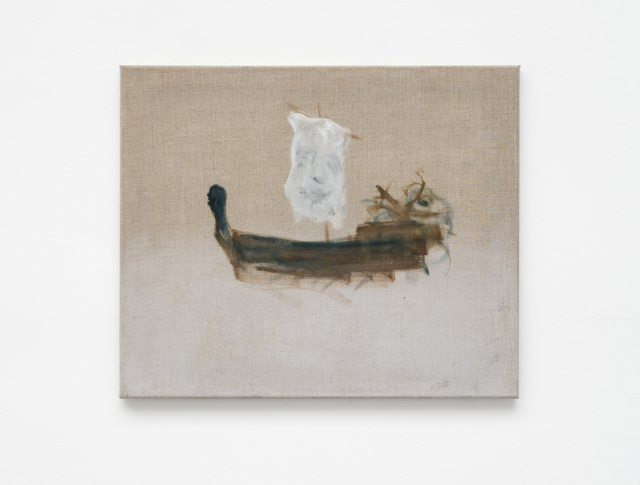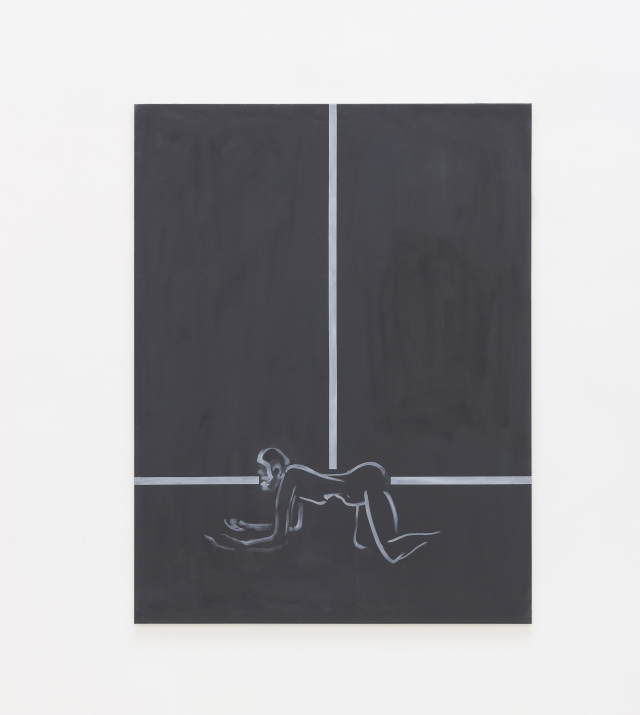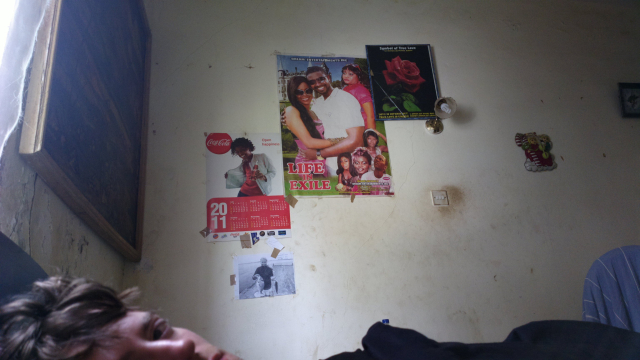Walking with Pauł Sochacki the thin line between humor and politics
Introducing Berlin-based artist Pauł Sochacki approach to art, in preparation for his upcoming solo show at Sfeir Semmler gallery in Hamburg.

Pauł Sochacki, Fire Department, 2018, oil on linen. Courtesy of the artist and EXILE gallery.
First Impressions.
At first sight, the artwork of Berlin-based Pauł Sochacki struck us for its humour. Two of his paintings looked especially zany: Untitled (2018), which is a picture of a boat floating in a foggy gradient, adorned with an unhappy-looking head in the bow, and Fire Department (2018), where a brown centaur also stands forefront of a foggy gradient, bearing a fire in her belly and watering a weed with her tail.
Both technically and thematically, these paintings are odd. The canvas is left in its raw material state, except for the coloured area necessary to create the gradient. The paint strokes range from clear and solid to light and barely shaped into figuration. These formal choices, which are somewhat contradictory, reflect the weirdness of what is painted: figures that are recalling ancient Western mythologies, yet transformed by Pauł Sochacki into a much more surreal version of them.

Pauł Sochacki, Untitled, 2018, oil on linen. Courtesy of the artist and EXILE gallery.
Discoveries.
After an interesting conversation with the artist, which spanned over a few weeks of more or less paced email exchange, we understood that these paintings can be read in a radically different way than what initially hits the eye. To be clearer, it turns out that their iconography is much more specific and deeper than mere absurdity expressed on canvas, as there exists an entire narrative about the figures and symbols in these pictures, as well as a compelling story about their making and showing.
To begin unravelling the hidden layers of these paintings, it is helpful to quote in full the artist’s tale about the conditions they were exhibited:
The exhibition was spontaneous. My friend from Hamburg came by, we hung out at my studio with some tea and I painted these gradient paintings before driving back to Hamburg. Additionally we took two other paintings. One was installed in a shelter inside the floor and one in a smaller room where we prepared a tea-table. It was a small and spontaneous project space exhibition that a friend organised. The space was by the edge of the rich-area and was supposed to be demolished soon. The invitation to the show announced that it would be a presentation of a new building and a development project for the district, suggesting that a big fire department would be built and all local homeless would be employed there and offered social-service in that specific district. There was a small architectural model made of organic waste found in front of the gallery and four paintings were on view.

Installation shot with view of Untitled, 2018.
After this first point about what we might call “exhibition opportunity” for the artworks, we then learned further about the content of the pictures themselves:
The paintings in the exhibition were themed around lives in a society on weak ground. The boat picture represents an uprooted social driftwood, taken by a phantom guided by certain dominant winds and flows. Somehow it’s also inspired but old and contemporary slave labour. The other painting with the human-animal figure is titled fire department and it’s symbolic for the work of the imaginary fire-department, an inflamed tear is put on a seed to grow a connection to the next painting in the show: a reversed gradient showing a treetop in the sky and a cat that can’t find the way back down.
Sochacki completed this shift in the perception of the paintings towards more socially oriented meanings by giving us what he considered the key to see them as they were intended: the so-called human scale. This key concept reminded us of the early humanists, looking at art as an important tool to read and tackle social issues. In this regard, Schocki told us that for him art is “a representation of the conditions we are living in, drawing clear maps and figures of these conditions”. And yet, he continued, art as representation of these conditions should allow for an interaction with the viewer that is “more on an abstract and personal level”.

Pauł Sochacki, The Labyrinth of Truth, 2017, oil on linen. Courtesy of the artist and EXILE.
We think this is precisely where absurdism and humour come into play. In other words, the paintings of Pauł Sochacki are about social issues, and were indeed shown in specific social situations (whether fictional or not), yet we thought they spoke the language of humour and absurdity in order to draw near the personal and abstract dimensions that the artist himself sees as necessary conditions for art.
The relationship between humour and politics.
In regard to humour, aesthetician Noel Carroll has provided great insights into the relationship between it and politics. His passages on this topic seem particularly relevant to read the paintings by Pauł Sochacki as double layered pictures. According to Carroll, humour is not only valuable for the immediate pleasure it gives, as it also serves a crucial function at the level of political communities. More precisely, it helps reinforcing certain references shared among members of a community by breaking them through jokes and other humorous actions.
By hinging on the appeal of the pleasurable experience of humour, shared political issues on which humour depends can be expressed, and even tackled. This is precisely what we believe Sochacki’s paintings do, as they are both zany pictures and politically relevant ones in their iconography and contexts. This double movement is precisely the coupling of the social and personal dimensions that should embody.
The artist.
Pauł Sochacki’s artworks have recently been exhibited at the Art Genève booth of Exile Gallery, Vienna, and the Leopold Hoesch Museum in Duren, along with works by Raphaela Vogel. His upcoming show at Galerie Sfeir Semmler, hosted by Neue Kunst association in Hamburg, opens in March. Finally, we want to thank Burt Koller for reading a draft of this writing to Pauł while he was driving in South Africa.

Pauł Sochacki.
March 11, 2019
